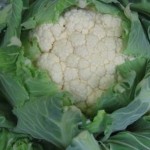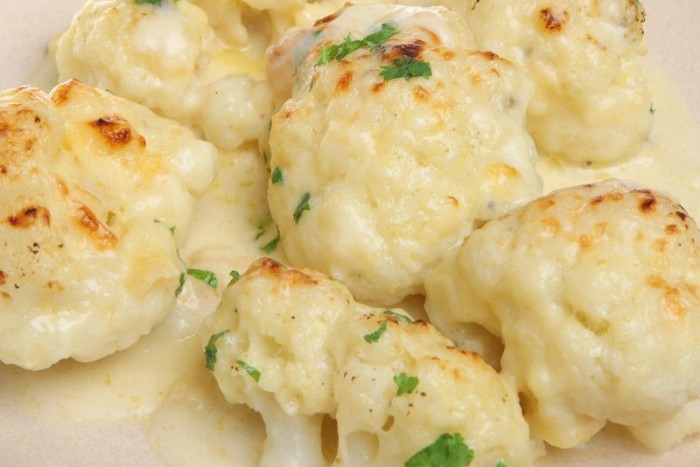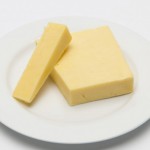Recipe & image supplied by the Grain Chain: www.grainchain.com
A simple yet comforting dish which can be eaten on its own or as a side dish. You could add more colour with the addition of broccoli or spinach.
Skills Check
Follow a recipe; follow food safety & hygiene rules; tidy away; use measuring spoons; use a jug to measure liquids; use weighing scales; cut using bridge/claw technique safely; use a box grater safely; use a hob (with adult supervision); use a colander; season to taste.
Equipment
Saucepan, wooden spoon, measuring jug, knife, chopping board, box grater, weighing scales, measuring spoons, colander, baking dish, oven gloves.
Allergens (Please note the allergens listed are indicative only. Allergens vary depending on brand; check the labels on the products you use)
Wheat | Gluten | Milk | Mustard
Ingredients (makes 6 portions):
- 1 cauliflower
- 75 g cheddar cheese, grated
- 1 tsp mustard
- 25 g butter/margarine
- 25 g plain flour
- 250 ml (1/2 pint) semi-skimmed milk
Method
- Remove the green leaves and stalk from the cauliflower and cut into florets.
- Place the cauliflower into a saucepan of water. Boil and then simmer for 4-5 minutes.
- Drain the cauliflower and place in baking dish.
- Melt the butter or margarine in a saucepan.
- Add the flour and stir into a paste.
- Gradually add the milk, stirring constantly. Slowly bring to the boil; the sauce will become thick. Reduce the heat and simmer for 2 minutes.
- Add 50g of the cheese to the sauce with the mustard, and stir until it melts.
- Pour the cheese sauce over the cauliflower.
- Sprinkle the remaining cheese over the top.
- Using oven gloves, place under the grill until golden brown.
So thinking about Cauliflower Cheese ...

Cheddar cheese can be high in saturated fats and salt. Use small amounts of mature cheese (it tastes stronger so you need less of it!) and choose low fat options where possible.
Nutritional Information
| - | Energy | 551KJ/132kcal | 7% |
| Med | Fat | 7.1g | 10% |
| Med | Saturates | 4.0g | 20% |
| Low | Sugars | 3.8g | 4% |
| Low | Salt | 0.4g | 7% |
per 165g serving
% of an adult's reference intake
Typical values per 100g: Energy 334KJ / 80kcal
Notes
A traffic light system is used on nutrition labels to make it easier to see which foods and drinks are lower in calories, fat, sugar and salt. Try and choose more ‘greens’ and ‘ambers’ and fewer ‘reds’, and stick to smaller portions of ‘reds’.
Just because a recipe or a food has a red traffic light doesn't mean you shouldn't eat it. Understanding why a food or recipe might have a red light can be helpful. For example oily fish is high in total fat and so any recipe containing oily fish is likely to be ‘red’ for fat. But it is recommended that we eat oily fish at least once a week because the type of fat it contains is beneficial for our health.
% Reference Intakes are also shown. Reference Intakes are guidelines about the approximate amount of particular nutrients and energy required for a healthy diet (based on an average-sized woman doing an average amount of physical activity). Most children will require less than these Reference Intakes. The contribution of one serving of a food or drink to the Reference Intake for each nutrient is expressed as a percentage.




